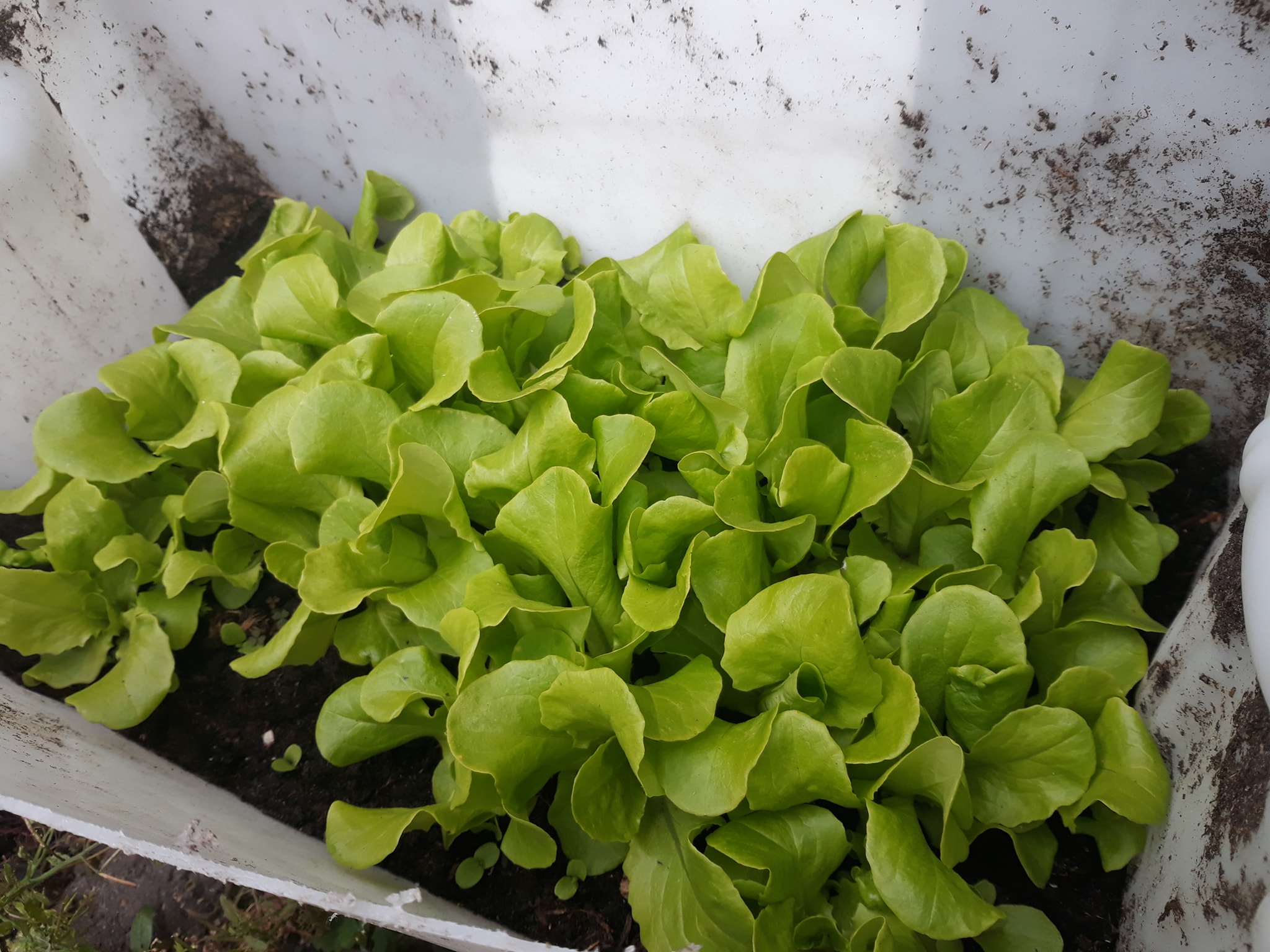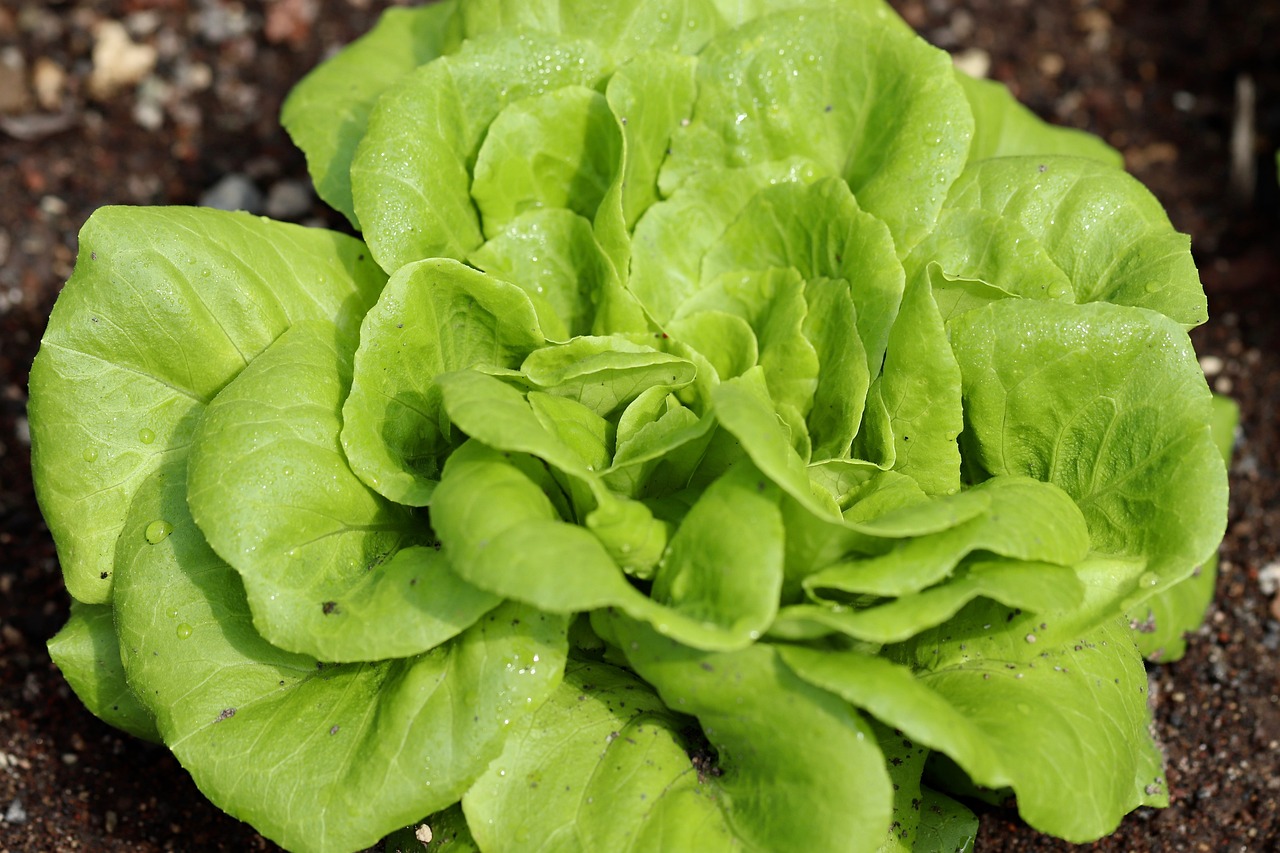
Ever dream of clipping fresh, crisp lettuce for your dinner straight from your balcony? You might be surprised at how easy it is to turn your tiny urban oasis into a miniature lettuce farm. Here’s the good news: with a little planning and these five simple steps, you can be harvesting homegrown lettuce in just a few short weeks!
This post may have affiliate links. This means that sometimes when you click a link on our site and make a purchase on Amazon, we may earn a small commission at no additional cost to you. We only recommend products we truly believe in, and your support helps keep us running!
1. Picking the Perfect Potting Palace

Your first task is to find the ideal container for your leafy green haven. Here are a few key considerations:
- Size: Lettuce doesn’t need a massive mansion. A pot that’s at least 6 inches deep and 8-12 inches wide will provide ample room for several lettuce plants to thrive.
- Drainage: Stagnant water is a recipe for disaster for your lettuce. Make sure your chosen pot has drainage holes to prevent waterlogging.
- Material: Plastic, terracotta, or fabric grow bags are all suitable options. Plastic is lightweight and affordable, while terracotta offers classic aesthetics and breathability. Fabric grow bags promote good drainage and root health.
Top Tip: Repurpose old containers! As long as they have drainage holes, buckets, washtubs, or even stylish shopping bags can become homes for your lettuce.
2. Selecting Superstar Seeds

Now comes the fun part: choosing your lettuce variety! There are a wide variety of lettuces to explore, each with its own unique flavor and texture. Here are a few popular choices perfect for container gardening:
- Romaine Lettuce: This sturdy, tall lettuce is a classic for Caesar salads and adds a satisfying crunch.
- Butter Lettuce: Butter lettuce boasts incredibly soft, buttery leaves that are ideal for delicate salads or lettuce wraps.
- Leaf Lettuce: Available in a rainbow of colors, leaf lettuce offers a beautiful and versatile option. Choose from red sails, green romaine, or even a spicy mustard variety!
Lettuce Like a Local: Opt for seeds labeled “heat tolerant” if your balcony gets a lot of afternoon sun.
3. Seeding Success: A Recipe for Growth
With your container and seeds ready, it’s time to get your hands dirty (in the best way possible!)
- Potting Mix Magic: Fill your container with a high-quality, well-draining potting mix. Seedling mixes are often ideal as they’re lightweight and nutrient-rich.
- Seeding Shenanigans: Here comes the delicate part! Most lettuce varieties benefit from “direct seeding,” meaning you sow the seeds directly into the potting mix. For smaller seeds like leaf lettuce, sprinkle them lightly over the soil surface and gently press them in. Larger seeds like romaine can be planted a little deeper, about ¼ inch below the soil surface.
- Watering Wisdom: After seeding, give your little lettuce friends a gentle drink. Aim for consistent moisture in the top inch of soil, but avoid soaking the pot.
Light Fantastic: Place your container in a location that receives at least 5-6 hours of direct sunlight each day. A sunny balcony is perfect!
4. Watching Your Lettuce Take Flight

The waiting game begins! But fear not, those tiny seeds will soon transform before your eyes. Here’s what to expect:
- Sprouting Spectacle: Within a week or two, you should see your first lettuce seedlings emerge!
- Thinning the Ranks: As your seedlings grow, you might notice some crowding. To ensure healthy growth, gently thin out the weaker plants, leaving about 4-6 inches of space between each remaining plant.
Hungry, Hungry Lettuces: Once your plants have a few sets of true leaves (the larger leaves that appear after the initial cotyledons), you can start feeding them with a diluted liquid fertilizer every other week. Opt for a balanced fertilizer formulated for vegetables.
5. Harvest Time: Your Balcony Bounty Awaits!
The moment you’ve been waiting for has arrived – harvest time! Here’s how to enjoy your homegrown lettuce:
- The Cutting Edge: You can harvest lettuce in two ways. For “cut-and-come-again” varieties like leaf lettuce, simply snip off the outer leaves as needed. The plant will continue to produce new growth. For head-forming lettuces like romaine, wait until the head is firm and full-sized before harvesting the entire plant.
Freshness Fiesta: Rinse your harvested lettuce gently and enjoy it immediately! Homegrown lettuce boasts a flavor that far surpasses anything store-bought.
Bonus Tip: Don’t discard the lettuce roots after harvest!
Balcony Bounty Bonus: Repurposing Lettuce Roots and Extending Your Harvest
Those leftover lettuce roots at the bottom of the pot hold a surprising secret: they can be coaxed into producing a second (and sometimes even a third!) harvest! Here’s how to extend your balcony lettuce bounty:
- Root Revival: After harvesting your lettuce, cut the stem down to about 1 inch above the soil line.
- Watering Wisely: Continue to water your pot as usual, keeping the soil consistently moist.
- Patience is a Virtue: It might take a few weeks, but with a little TLC, new shoots should begin to sprout from the base of the remaining stem.
Lettuce Learn More: Not all lettuce varieties are suitable for regrowing. Romaine and butter lettuce tend to be more successful at this than leaf lettuce.
Beyond the Basics: Balcony Lettuce Gardening Hacks
Now that you’ve mastered the fundamentals, here are a few additional tips to elevate your balcony lettuce game:
- Succession Planting: To enjoy a continuous supply of fresh lettuce, practice succession planting. Sow new seeds every two to three weeks throughout the growing season.
- Companion Planting: Lettuce thrives when planted alongside certain herbs and vegetables. Nasturtiums deter pests, while dill attracts beneficial pollinators.
- Beat the Heat: During scorching summer days, consider providing your lettuce with some shade protection during the hottest part of the afternoon.
